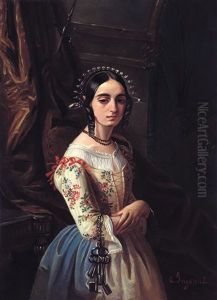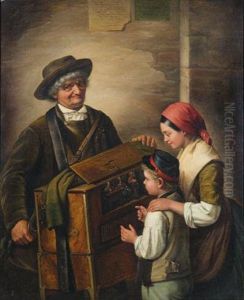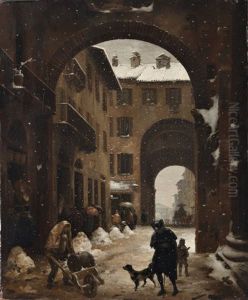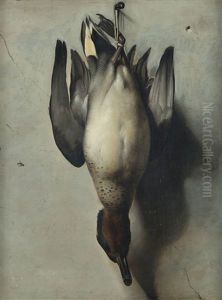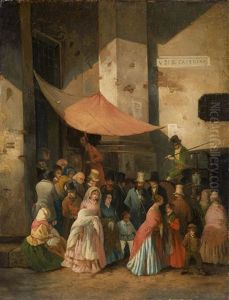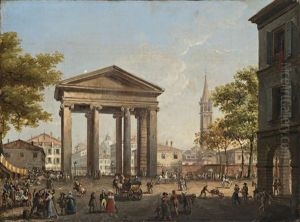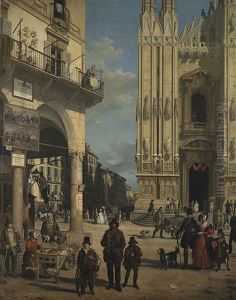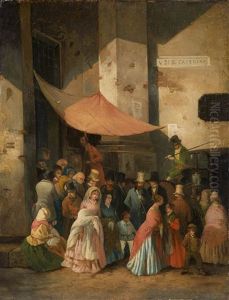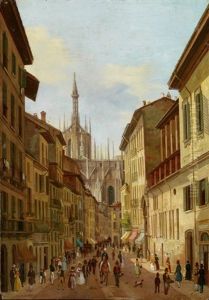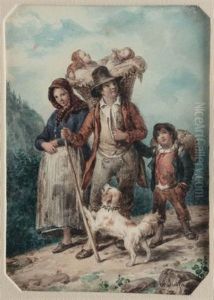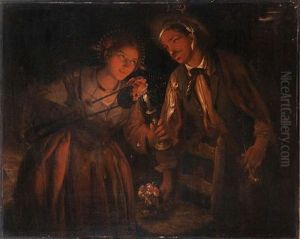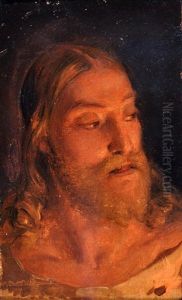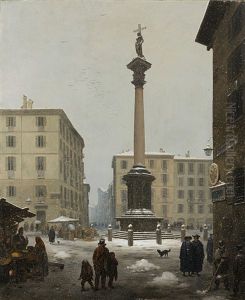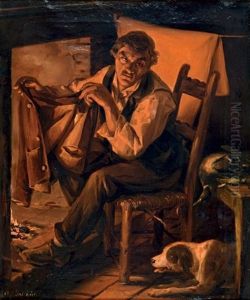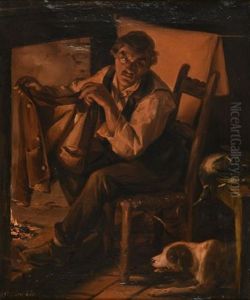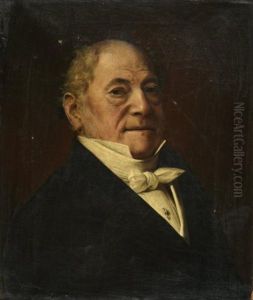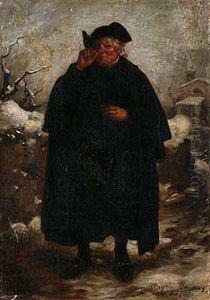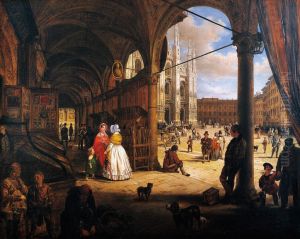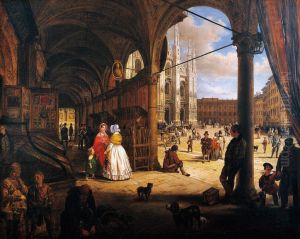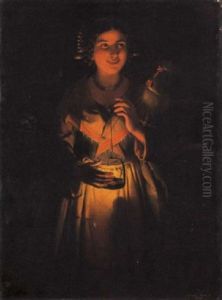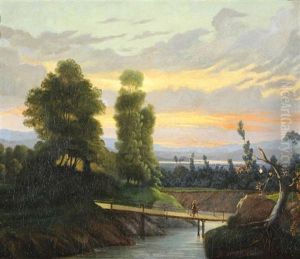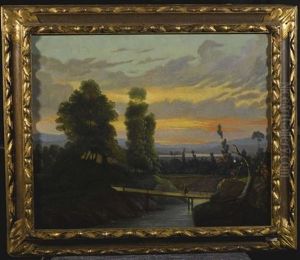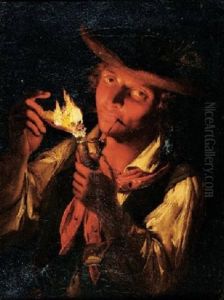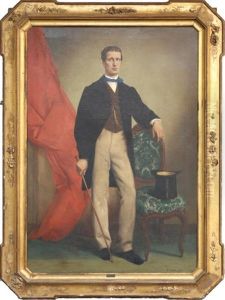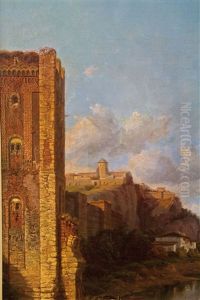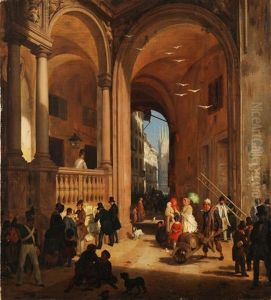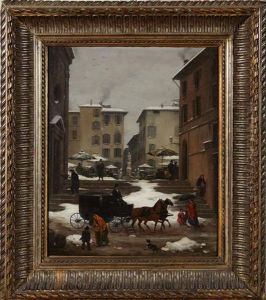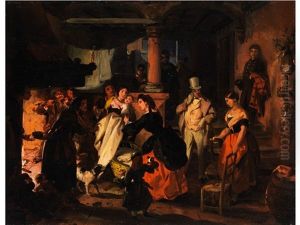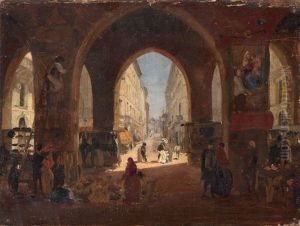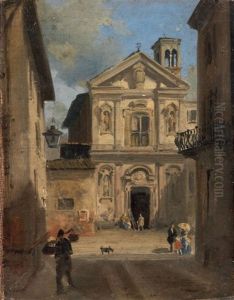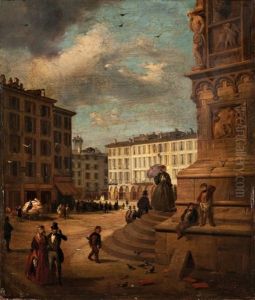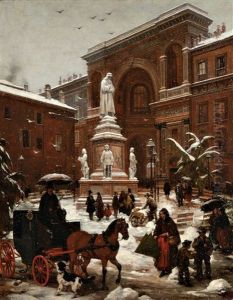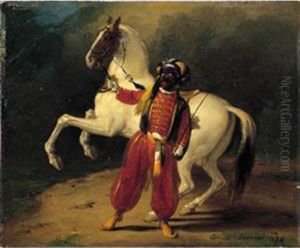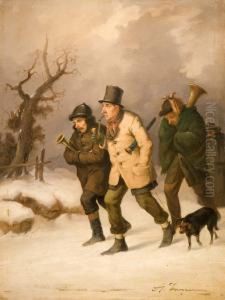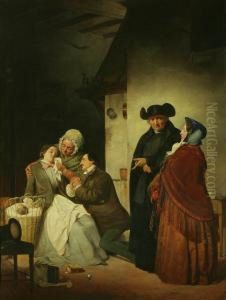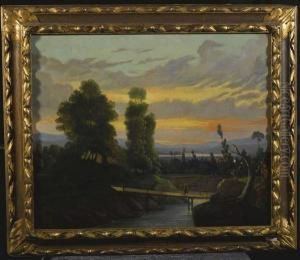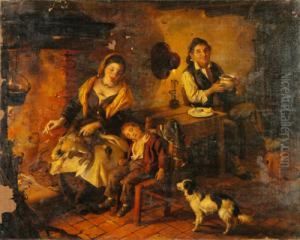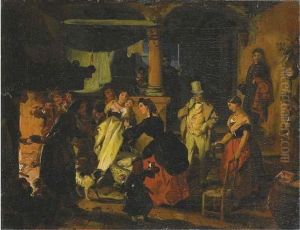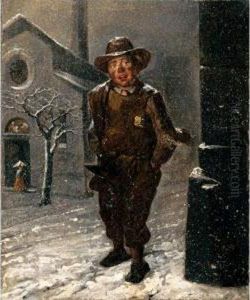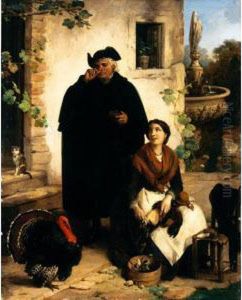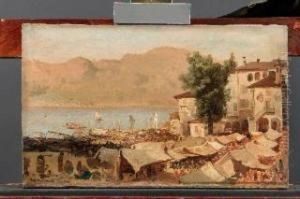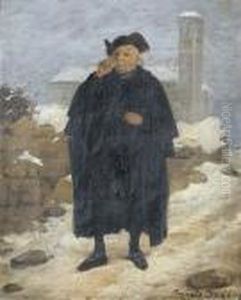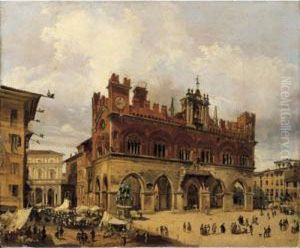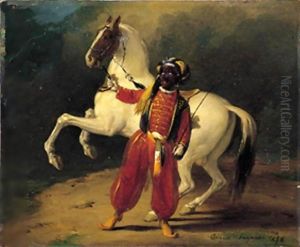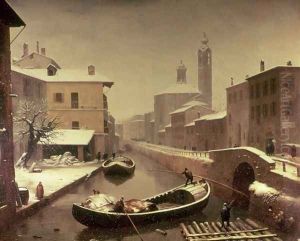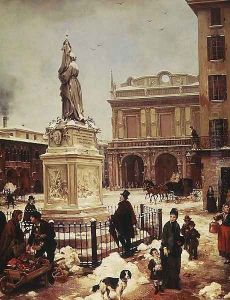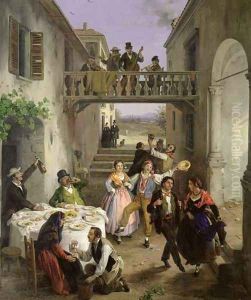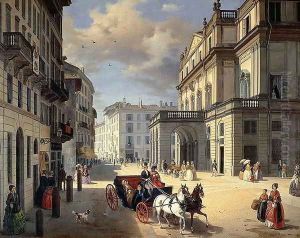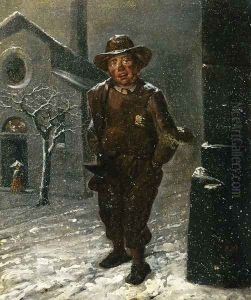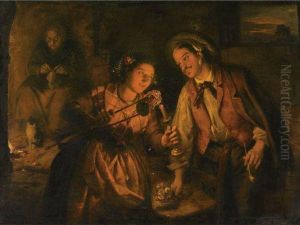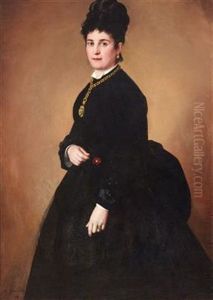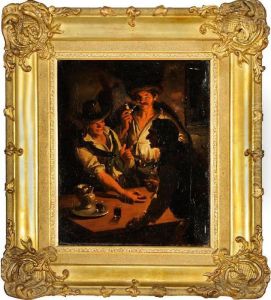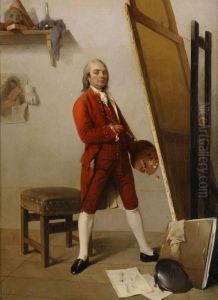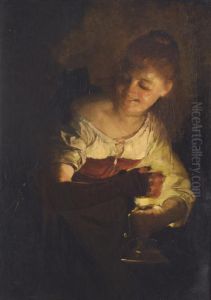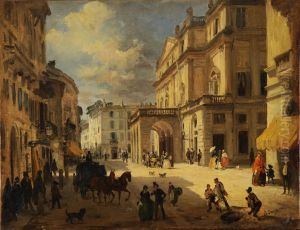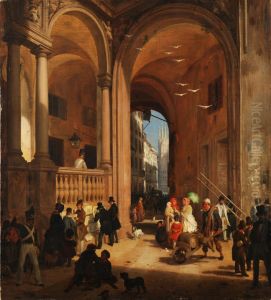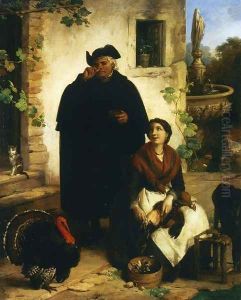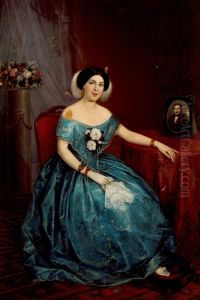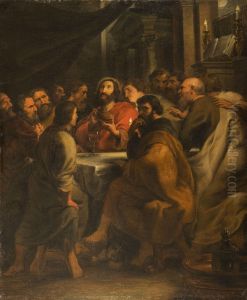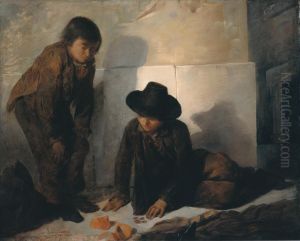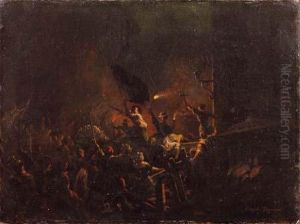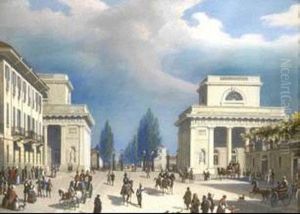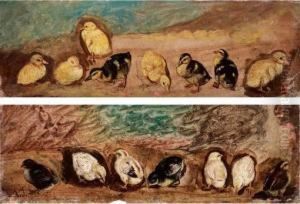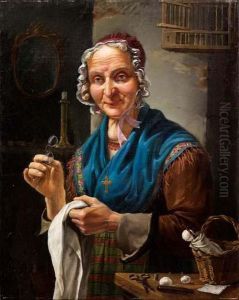Angelo Inganni Paintings
Angelo Inganni was an Italian painter born in Brescia on April 24, 1807. He was one of the most significant artists from the Lombard region in the 19th century, primarily known for his cityscapes and architectural paintings. Inganni's work was characterized by meticulous attention to detail and a penchant for capturing the atmospheric qualities of light and shadow in urban settings.
Inganni studied at the Accademia di Belle Arti in Venice, where he was influenced by the neoclassical style. However, as his career progressed, he developed a more personal style that leaned towards romanticism. After his studies, he returned to Brescia and began working on religious and historical paintings. Despite his early genre, he gained fame for his detailed depictions of cities, especially Milan, where he moved in the 1830s.
During his time in Milan, Inganni's artistic focus shifted primarily to cityscapes. His paintings of Milan's streets, buildings, and daily life were highly sought after by the Milanese bourgeoisie, who appreciated his ability to portray the city with such realism and vibrancy. Inganni's works from this period often showcase the transformations that Milan underwent in the 19th century, documenting the architectural changes as the city modernized.
Apart from cityscapes, Inganni also painted landscapes, still lifes, and portraits, although these were less prevalent in his oeuvre. His landscape and portrait works maintained the same meticulous attention to detail found in his urban scenes.
Inganni's reputation grew beyond Milan, and his paintings were exhibited at various important exhibitions, including those in Brera and the annual exhibitions of the Società per le Belle Arti ed Esposizione Permanente. His work was not only appreciated in Italy but also garnered attention internationally, with some works being exhibited in Paris.
Angelo Inganni's health declined in his later years, and he passed away on December 4, 1880, in Gussago. Today, Inganni's paintings can be found in various art galleries and museums in Italy, serving as a testament to his skill in capturing the spirit of 19th-century Italian urban life. His artistic legacy is particularly notable for its contribution to the visual documentation of Italy's architectural and urban transformation during a period of significant change.
